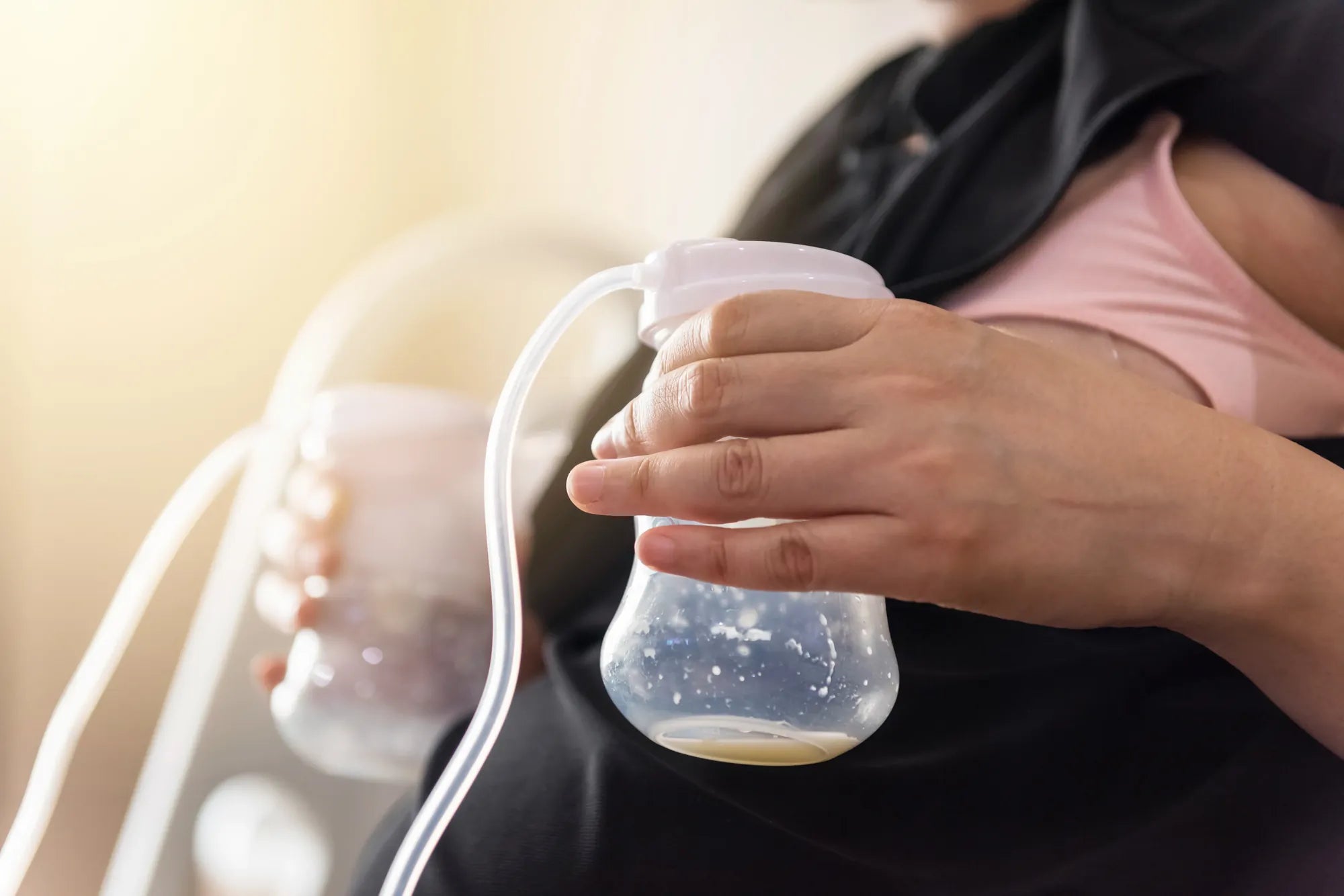Accueil
Pregnancy, Breastfeeding, and Pumping: The Ultimate Guide for Moms
Is It Necessary to Sterilize Breast Pump Parts? A Comprehensive Guide

Is It Necessary to Sterilize Breast Pump Parts? A Comprehensive Guide
When it comes to breastfeeding and expressing milk, hygiene is paramount. One of the most common questions new parents ask is, Is it necessary to sterilize breast pump parts? The answer is not just a simple yes or no. It involves understanding the importance of cleanliness, the risks of contamination, and the best practices to ensure the safety of both the baby and the mother.
Why Sterilization Matters
Breast pump parts come into direct contact with breast milk, which is a nutrient-rich substance that can easily become a breeding ground for bacteria and other harmful microorganisms. Sterilizing these parts helps eliminate any potential pathogens that could pose a risk to the baby's health. Babies, especially newborns, have underdeveloped immune systems, making them more susceptible to infections. Proper sterilization reduces the likelihood of introducing harmful bacteria into their delicate systems.
Risks of Not Sterilizing Breast Pump Parts
Failing to sterilize breast pump parts can lead to several risks, including bacterial contamination, mold growth, and even viral infections. Bacteria such as E. coli and Staphylococcus can thrive in milk residues left on pump parts, leading to gastrointestinal issues or more severe infections in infants. Mold can develop in hard-to-reach areas of the pump, especially if parts are not thoroughly dried after cleaning. Additionally, viruses like the flu or common cold can be transmitted through contaminated pump parts, putting both the baby and the mother at risk.
When Sterilization Is Essential
Sterilization is particularly crucial in certain situations. For instance, if the baby is premature or has a compromised immune system, sterilization becomes non-negotiable. Similarly, if the breast pump is shared between multiple users, sterilization is necessary to prevent cross-contamination. Additionally, after an illness or if the pump has been exposed to unsanitary conditions, sterilization is a must to ensure safety.
Best Practices for Sterilizing Breast Pump Parts
To maintain the highest level of hygiene, follow these best practices for sterilizing breast pump parts:
- Clean Before Sterilizing: Always wash breast pump parts with warm, soapy water before sterilizing. Use a brush to scrub hard-to-reach areas and rinse thoroughly to remove any soap residue.
- Choose the Right Sterilization Method: There are several methods to sterilize breast pump parts, including boiling, using a steam sterilizer, or employing chemical sterilizing solutions. Choose the method that best suits your needs and follow the manufacturer's instructions.
- Dry Thoroughly: After sterilization, allow the parts to air dry completely on a clean, dry surface. Avoid using towels or cloths that may introduce contaminants.
- Store Properly: Once dry, store the sterilized parts in a clean, covered container to prevent contamination until the next use.
How Often Should You Sterilize?
The frequency of sterilization depends on various factors, including the baby's age, health status, and how often the pump is used. For newborns or babies with health concerns, daily sterilization is recommended. For older, healthy babies, sterilizing breast pump parts once a day or every few days may be sufficient, provided that the parts are thoroughly cleaned after each use.
Alternatives to Daily Sterilization
While sterilization is essential, it may not always be practical to sterilize breast pump parts after every use. In such cases, thorough cleaning with hot, soapy water can be an effective alternative. However, it is still advisable to sterilize the parts at least once a day to ensure optimal hygiene. Additionally, using disposable breast pump parts can reduce the need for frequent sterilization, though this may not be a cost-effective or environmentally friendly solution for everyone.
Common Mistakes to Avoid
Even with the best intentions, some common mistakes can compromise the effectiveness of sterilization. These include:
- Incomplete Cleaning: Failing to clean breast pump parts thoroughly before sterilization can leave behind milk residues that harbor bacteria.
- Improper Drying: Not allowing parts to dry completely can lead to mold growth, even after sterilization.
- Using Damaged Parts: Cracked or damaged breast pump parts can be difficult to clean and sterilize effectively, increasing the risk of contamination.
- Overlooking Storage: Storing sterilized parts in an unclean environment can negate the benefits of sterilization.
Balancing Hygiene and Practicality
While sterilization is a critical aspect of maintaining breast pump hygiene, it is essential to strike a balance between cleanliness and practicality. Over-sterilizing can lead to wear and tear on pump parts, reducing their lifespan. On the other hand, under-sterilizing can compromise the baby's health. Finding a routine that works for your specific situation is key to ensuring both safety and convenience.
Ultimately, the question Is it necessary to sterilize breast pump parts? underscores the importance of prioritizing hygiene in the breastfeeding journey. By understanding the risks, following best practices, and adapting to your unique circumstances, you can ensure that your baby receives the safest and healthiest milk possible. Remember, a little extra effort in sterilization can go a long way in safeguarding your baby's well-being.
Partager

